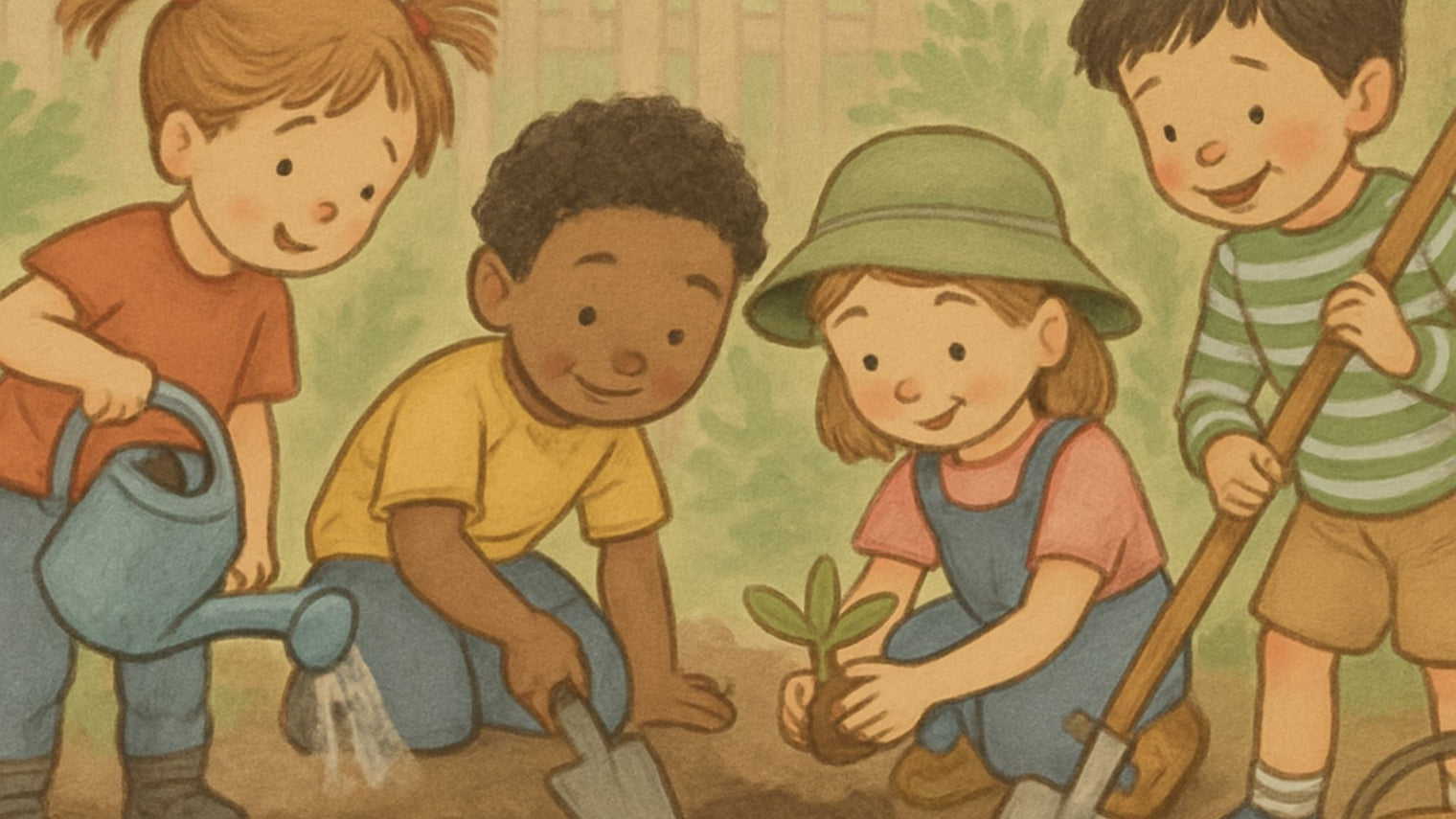Creating a Montessori-inspired garden is one of the most rewarding ways to nurture a child’s curiosity, independence, and love for nature.
In a world where screens often dominate attention, a garden offers a peaceful, hands-on learning environment where kids can connect with the earth, observe life cycles, and take pride in caring for living things.
At Dannico Woodworks, we believe that learning shouldn’t just happen at a desk—it should happen through real experiences that engage the senses. Just as our Montessori furniture collection encourages independence and exploration indoors, a Montessori garden helps children extend that same spirit of discovery outdoors.
 Getting Started with Your Montessori Garden
Getting Started with Your Montessori Garden
Choosing the Right Location
The first step in setting up a Montessori garden is selecting the right location. Ideally, you want a space that is easily accessible to children, safe, and has plenty of sunlight.
If you have limited outdoor space, consider using containers or vertical gardens to maximize the available area.
Designing Your Garden Layout
When designing your garden layout, think about how you can create an inviting space that encourages exploration and independence.
Include pathways for children to move freely, and consider adding different zones for various activities, such as planting, watering, and observing.
Safety First
Safety is paramount when setting up a Montessori garden. Ensure that tools and materials are child-friendly and age-appropriate.
Avoid using harmful chemicals or plants that could be toxic if ingested. Educate children on safety practices, such as wearing gloves and using tools correctly.
Essential Elements of a Montessori Garden
Child-Sized Tools and Equipment
Providing child-sized tools and equipment empowers children to participate actively in garden activities.
Look for sturdy, easy-to-handle tools like trowels, watering cans, and gloves specifically designed for small hands.
Sensory Plants and Features
Incorporate a variety of sensory plants and features to stimulate children's senses. Consider planting fragrant herbs like mint and lavender, or adding textured plants like lamb's ear. Include elements like wind chimes, bird feeders, or a small water feature to engage their auditory and visual senses.
 Vegetable and Herb Gardens
Vegetable and Herb Gardens
A vegetable and herb garden is an excellent way to teach children about where food comes from and how it grows.
Choose easy-to-grow plants like cherry tomatoes, radishes, or basil, and involve children in the planting, watering, and harvesting process.
Wildlife-Friendly Spaces
Encourage biodiversity by creating wildlife-friendly spaces within your Montessori garden.
Add birdhouses, butterfly feeders, or bug hotels to attract various species and provide children with opportunities to observe and learn about different creatures.
Montessori Garden Ideas for Hands-On Learning
Nature Journals
Encourage children to keep nature journals where they can record their observations, draw plants and animals they encounter, and reflect on their experiences in the garden.
This activity fosters creativity, observation skills, and a deeper connection to nature.
Composting
Introduce children to composting as a way to learn about recycling and sustainability.
Teach them how to collect kitchen scraps and garden waste, and show them how these materials break down into nutrient-rich compost for the garden.
Themed Garden Areas
Create themed garden areas to spark children's interest and imagination. You could have a butterfly garden, a sensory garden, or a "pizza" garden with ingredients like tomatoes, basil, and oregano. Each theme can provide unique learning experiences and opportunities for exploration.
Seasonal Activities
Incorporate seasonal activities into your Montessori garden setup.
In spring, children can plant seeds and watch them grow. In summer, they can care for plants and harvest produce.
Autumn can be a time for collecting leaves and seeds, while winter offers opportunities for planning and preparing for the next planting season.
Benefits of a Montessori Garden
Fostering Independence and Responsibility
Working in a Montessori garden helps children develop a sense of responsibility as they care for plants and maintain the garden space.
It encourages them to take initiative, make decisions, and see the results of their efforts, fostering independence and self-confidence.
Encouraging Curiosity and Exploration
A garden is a dynamic environment that constantly changes with the seasons, providing endless opportunities for children to explore and learn.
This environment encourages curiosity, critical thinking, and problem-solving skills as children interact with the natural world.
Enhancing Physical and Mental Well-being
Gardening is a physical activity that promotes coordination, strength, and flexibility. It also offers mental health benefits, including stress reduction and relaxation promotion.
Being outdoors and engaging with nature can enhance children's overall well-being and instill a lifelong appreciation for the environment.
Tips for Maintaining a Montessori Garden
- Keep it child-led. Resist the urge to fix mistakes; let children experiment and learn from experience.
- Rotate tasks. One day they can water, another day they can harvest or clean tools.
- Model care and respect. Children imitate adults—show them how to handle plants gently.
- Celebrate progress. Acknowledge effort, not perfection. “You remembered to water the herbs today!” goes a long way.
- Stay flexible. A garden should evolve as your child’s interests grow.
FAQs
At what age is it best to start a Montessori garden?
Children as young as two can participate with supervision. The key is to tailor tasks to their abilities—toddlers can water plants, while older kids can handle planting and harvesting.
Do I need a large outdoor space?
Not at all! Montessori principles can thrive in small spaces. Even a few pots on a balcony or windowsill can become a meaningful garden.
How do I keep my child engaged long-term?
Let them take ownership. Involve them in choosing plants, decorating pots, or deciding when to harvest. Their sense of pride keeps them motivated.
Can this work alongside homeschooling or preschool activities?
Absolutely. Gardening complements Montessori-style homeschooling perfectly by integrating science, math, and practical life lessons into daily activities.
Final Thoughts
A Montessori garden isn’t just about plants—it’s about cultivating independence, curiosity, and a lifelong respect for nature.
It’s a space where children can learn responsibility through nurturing life and experience the joy of creating something real and lasting with their own hands.
At Dannico Woodworks, we share the same mission: designing environments that encourage children to grow, explore, and thrive independently.
Just as our furniture helps kids take charge of their indoor spaces, your Montessori garden empowers them to take ownership of the world outside.
Ready to start building your child’s learning environment—inside and out? Explore our thoughtfully designed Montessori furniture collection and bring the spirit of independence home today.
What’s the first thing your child would love to plant in their very own Montessori garden?

